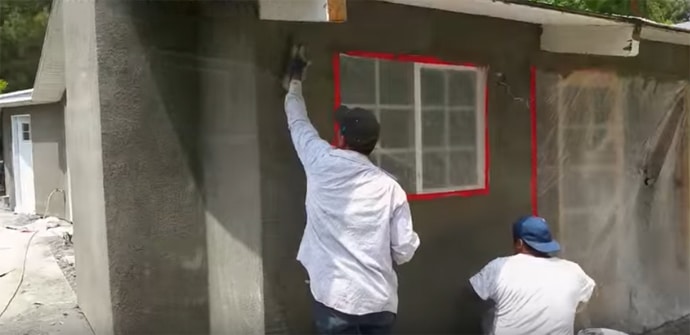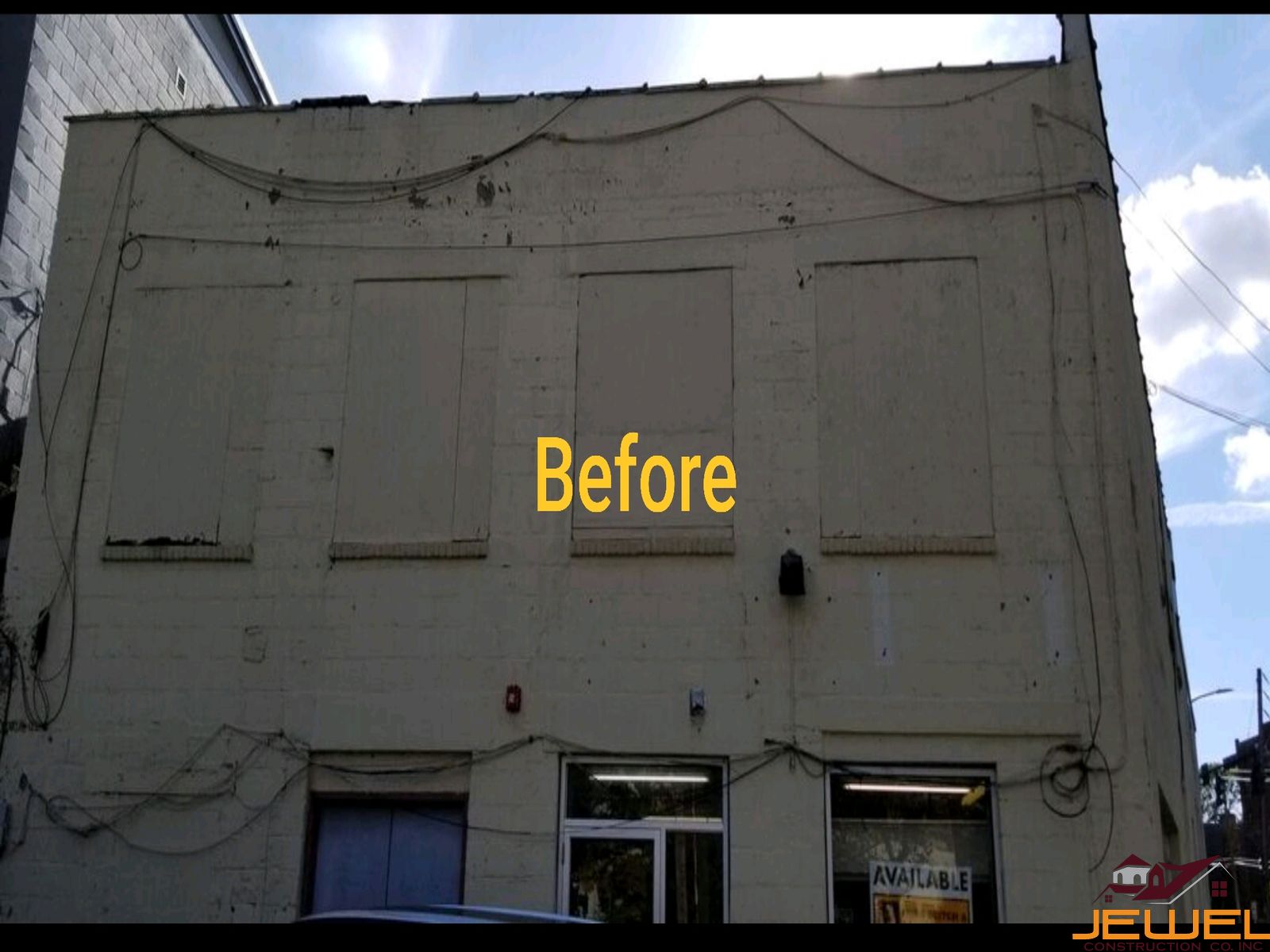What to Look for in a Highly-Rated Stucco Contractor for Your Home
What to Look for in a Highly-Rated Stucco Contractor for Your Home
Blog Article
A Comprehensive Overview to Stucco Repair Techniques
Stucco, a popular selection for exterior surfaces, can be subject to various types of damage that compromise both its aesthetic appeal and architectural honesty. Recognizing the subtleties of stucco repair work is important for property owners and specialists alike, especially in identifying the kind of damages and selecting suitable fixing methods.
Recognizing Stucco Damage
Identifying stucco damage is vital for keeping the integrity of a building's exterior. Stucco, a prominent option for its durability and aesthetic allure, can experience various forms of damage due to environmental elements, poor installation, or age. Common issues consist of splits, water breach, and discoloration, each suggesting underlying issues that need instant interest.
Fractures in stucco can happen for a number of factors, such as settling of the foundation or thermal growth and contraction. If left unaddressed, these fissures might seem small at first yet can lead to substantial water seepage. Water damage, commonly shown up as mold or rot, can compromise the structural honesty of wall surfaces and cause expensive repair work.
Discoloration or staining on stucco surfaces can signify dampness issues or the presence of algae and mold. Normal assessments and upkeep are necessary to capture these issues early, as they can escalate with time. Comprehending the different kinds of stucco damages and their ramifications is important for building owners, ensuring prompt repair work and preserving the structure's value and safety. By focusing on stucco maintenance, one safeguards both visual appeal and architectural durability.

Devices and Products Needed
When starting a stucco repair job, having the right tools and materials on hand is necessary to guarantee a successful outcome. Key tools include a trowel, which is vital for smoothing and using stucco; a hawk to hold the stucco while functioning; and a margin trowel for accuracy in tight areas. A mixing paddle connected to a drill will certainly aid accomplish a constant stucco mix, while a sponge or brush is required for finishing touches and texture.
In terms of materials, the main part is the stucco mix itself, available in pre-mixed bags or as individual parts of sand, lime, and concrete. If the repair work includes a certain color or structure, a shade textured or additive surface might also be required (stucco contractor). Having these materials and devices prepared will certainly streamline the repair work procedure and add to a professional-looking outcome.
Step-by-Step Repair Service Strategies
Successfully repairing stucco needs an organized strategy to ensure longevity and aesthetic charm. Begin by examining the extent of the damage. Determine splits, openings, or locations of delamination, and mark them for fixing. Next, prepare the surface by getting rid of any kind of loosened or collapsing stucco making use of a chisel or wire brush. This action is essential for achieving a strong bond with the new material.
When the area is prepped, clean the surface area with water to get rid of dirt and particles. For little fractures, fill them with a top notch stucco patching substance utilizing a putty knife, making certain to smooth it out for a smooth surface. For larger openings, apply a bonding agent to the sides prior to utilizing a stucco mix to fill up deep space, layering it gradually.
After the fixing product has healed, make use of a trowel to match the appearance of the surrounding stucco. Finally, permit the repaired area to completely dry totally before using a coat of guide and paint, if preferred, to make sure harmony. Complying with these steps will certainly lead to a resilient and aesthetically attractive repair work that mixes harmoniously with the initial structure.
Typical Mistakes to Stay Clear Of

Another common pitfall is using the wrong mix ratios. Complying with manufacturer specifications for blending stucco is crucial; inappropriate proportions can deteriorate the final item. In addition, hurrying the treating process can endanger the honesty of the repair service. Enable enough time for each and every layer to cure you could look here before applying added coats.
Not matching the appearance and color of existing stucco is another oversight that can lead to an undesirable repair work - stucco contractor. It's important to carry out comprehensive research study on the initial texture, using similar strategies to achieve a smooth finish
Finally, ignoring climate condition throughout application can result in poor outcomes. Prevent functioning in severe temperatures or during wet climate, which can detrimentally influence drying and healing times. By staying away from these typical errors, you can make certain a much more efficient and resilient stucco repair work.
Maintenance Tips for Durability
 To guarantee the longevity of your stucco fixings, normal upkeep is crucial. Begin by examining the stucco surface area a minimum of twice a year for any type of signs of damage, such as fractures or staining. Promptly resolve any kind of concerns to avoid more wear and tear.
To guarantee the longevity of your stucco fixings, normal upkeep is crucial. Begin by examining the stucco surface area a minimum of twice a year for any type of signs of damage, such as fractures or staining. Promptly resolve any kind of concerns to avoid more wear and tear.Additionally, preserve appropriate water drainage around the foundation to avoid moisture build-up, which can bring about mold and mildew and structural damages. Guarantee downspouts and gutters are operating appropriately, directing water away from the stucco surface.

Last but not least, think about applying a safety sealer every couple of years. This will improve the stucco's resistance to moisture and UV deterioration, more prolonging its lifespan.
Final Thought
In final thought, effective stucco repair methods are necessary for maintaining structure stability and aesthetics. Additionally, regular upkeep, consisting of examinations and cleaning, plays a vital duty in prolonging the lifespan of stucco.
Recognizing the nuances of stucco repair work is vital for home owners and contractors alike, particularly in identifying the kind of damage and selecting proper repair work strategies. Understanding the various kinds of stucco damage and their implications is vital for residential property owners, making sure timely repairs and maintaining the building's worth and safety.When getting started on a stucco repair work job, having the right devices and products on hand is important to ensure an effective end result. Trick tools consist of a trowel, check out here which is important for using and smoothing stucco; a hawk to hold the stucco while functioning; and a margin trowel for accuracy click here for more info in tight areas.To guarantee the long life of your stucco repair work, normal upkeep is essential.
Report this page